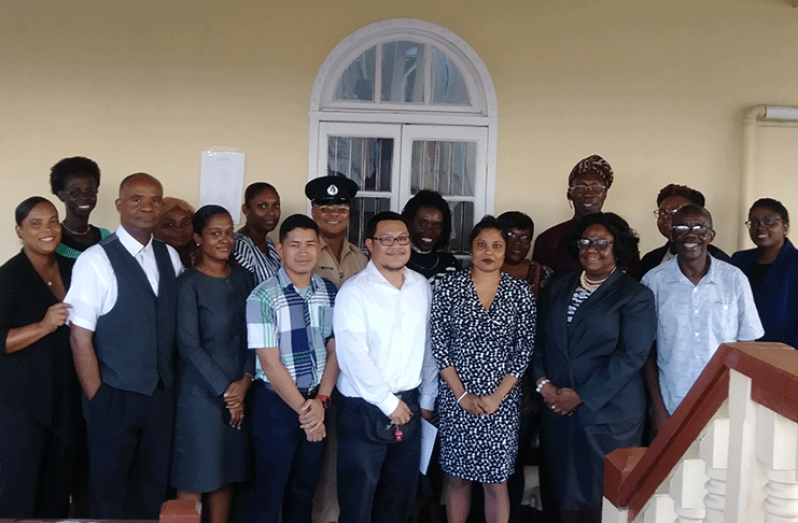A SEVEN-DAY training for magistrates, police officers, social workers and other team members of the newly-opened Drug Treatment Court that sought to sensitise attendees on the nature of addictions, concluded on Friday afternoon.
The team members would have gone through various types of other training leading up to the opening of the court, but the training was the first one organised after its opening. It was a partnership between the National Anti-Narcotics Agency, the judiciary, and the trainer, Wayne Hunte, who works under the Ministry of Public Health.
The newly-established court within the judiciary provides an alternative to incarceration for persons who would have committed non-violent criminal offences, just to support their drug habits.

“This training is to sensitise those working in the court about the nature and cycle of addiction, and the process that a person would go through to come out of their addictive thinking,” Tiffany Barry , Head of Drug Information Network of the National Anti-Narcotics Agency, said.
Speaking with Guyana Chronicle on the conclusion of the training at the High Court, Barry offered that the 30 participants were able to understand the addictive mind, the relationship between addiction and criminal thinking, and how to counsel persons dealing with an addiction.
Through the court, social services will also be provided to these individuals, along with skills training, job preparedness, and job placement, which all form part of the rehabilitation process.
“So we are teaching the participants the necessary skills that they would need to utilise in order to make the outcome of the court more successful, which would be to help the person kick the addiction and to stay sober in the long term so that they become productive members of society who are no longer engaging in criminal acts,” Barry said.
This would ultimately reduce the population of the prison because persons who are in need of treatment would not be incarcerated.
“Not everyone who commits a criminal act would necessarily benefit from being incarcerated. We are looking at what the reason behind the action is and the fact that many may be committing these crimes because of their addictions,” he said.
However, there is a specific criterion that persons would have to fit before they can be qualified to go through this court. These are persons who have a drug addiction, and who would have committed a non-violent crime. “The person who would be committing that simple larceny or choke and rob just so that they can go buy that piece of drug… those are the persons we are targeting because if they go to prison and then come out, they might just go right back to that habit,” Barry pointed out.
Meanwhile, Hunte, who would have been trained in the nature of addiction in a programme by the Organisation of American States, told this publication that many of the drug addicts do not believe that using drugs is a problem.
The training, he said, helped the participants understand these thinking patterns so that when they engage such persons, they would know if they are in the court just to avoid jail time of if they really want to change their behavior.
The court is operating out of the magistrate’s court and will be presided over by several magistrates. It will be in operation two days of every week. Once persons are found eligible to pass through it, they would be placed with a team consisting of the treatment provider, a social worker, and the magistrate who will be overseeing their case. The magistrate will be supervising this person to ensure that they are compliant with their treatment requirements.



.jpg)








